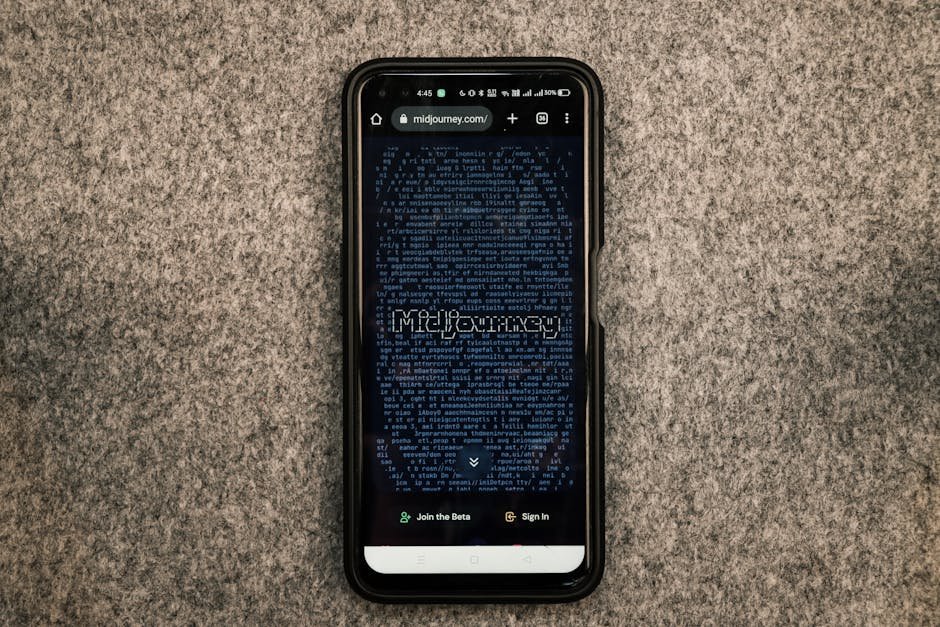Unlocking Growth: The Vital Role of a BDR in the SaaS Sales Funnel
In the fast-paced world of Software as a Service (SaaS), businesses are constantly on the lookout for innovative ways to capture leads and drive revenue. Enter the Business Development Representative (BDR)—the unsung hero navigating the intricate sales funnel. With a unique blend of tenacity and charm, BDRs are the lifeblood of any sales team, forging connections and igniting relationships that could blossom into long-term partnerships. In this article, we’ll explore the pivotal role BDRs play in a SaaS company’s sales journey, shedding light on their key responsibilities and the impact they have on turning prospects into loyal customers. Let’s dive in and discover how these dynamic individuals are shaping the future of SaaS sales!
Table of Contents
ToggleNavigating the SaaS Terrain: BDRs Journey Begins
Breaking into the SaaS landscape, BDRs (Business Development Representatives) find themselves at the frontline, driving leads and setting the stage for a successful sales journey. Their role is indispensable, serving as the bridge between marketing initiatives and the closing prowess of the sales team.
- Prospecting and Lead Generation: BDRs actively hunt for potential customers, leveraging tools like LinkedIn, email campaigns, and CRM systems to unearth opportunities.
- Initial Contact: They craft compelling outreach messages, ensuring that initial interactions are tailored to pique interest and address potential pain points.
- Qualification: It’s vital to weed out the tire-kickers from serious prospects. BDRs qualify leads using criteria such as budget, company size, and decision-making capacity.
BDRs also play a crucial role in nurturing relationships with prospective clients. Cultivating trust and value perception through personalized follow-ups can keep the sales conversation alive until it’s ready for handoff. Effective communication skills and a knack for understanding customer needs are essential.
| BDR Activities | Sales Funnel Stages |
|---|---|
| Researching Leads | Top of Funnel (TOFU) |
| Outreach and Engagement | Middle of Funnel (MOFU) |
| Qualifying Potential | Bottom of Funnel (BOFU) |
By working closely with marketing to understand campaign targets and outcomes, BDRs can refine their strategies to generate higher quality leads. Their adeptness in identifying pain points and needs can significantly shape the customer journey, setting up the sales team for a smoother transition and higher close rates.
Understanding the Ideal Customer Profile: Your First Mission
The ideal customer profile (ICP) serves as the cornerstone of your prospecting efforts in a SaaS company. It defines the perfect customer based on a mix of firmographic, environmental, and behavioral attributes, ensuring that your effort targets those who are most likely to convert and deliver maximum lifetime value. Think of the ICP as the North Star guiding your sales and marketing energies towards optimal results.
Building an ICP isn’t a one-shot deal but an iterative process involving both qualitative insights and quantitative data analysis. Key attributes to identify include:
- Demographics: Business size, industry, location.
- Behavior Patterns: Customer journey stages, decision-making processes.
- Needs and Pain Points: What problems they face and how your SaaS can solve them.
Here’s a quick rundown of some crucial ICP elements and why they matter:
| Attribute | Importance |
|---|---|
| Industry | Tailors your solution to sector-specific challenges |
| Company Size | Ensures your SaaS scales correctly for their needs |
| Job Role | Targets decision-makers and influencers |
| Technological Stack | Assesses compatibility with existing systems |
Revamping and fine-tuning your ICP not only maximizes the impact of your prospecting but also aligns marketing and sales teams on the most lucrative targets. Remember, the goal is to attract the right customers, reducing churn and boosting customer satisfaction over the long haul.
Mastering Outreach: Crafting Messages that Resonate
Crafting effective outreach messages is an essential skill for Business Development Representatives (BDRs) in a SaaS company. BDRs play a pivotal role in transforming cold leads into warm prospects, setting the stage for the sales team to close deals. To succeed, BDRs should focus on creating messages that resonate deeply with the recipient. Here are some key responsibilities:
- Identifying Pain Points: Understanding the specific challenges and needs of potential customers is crucial. BDRs must perform detailed research to identify these pain points.
- Personalized Messaging: Generic messages are a thing of the past. Tailoring communications to address individual prospects can significantly increase response rates.
- Nurturing Leads: BDRs build relationships over time, providing valuable content and insights that keep the prospect engaged until they are ready to move further down the sales funnel.
- Tracking and Metrics: Measuring the effectiveness of outreach efforts is essential. Analyzing metrics such as open rates, response rates, and conversion rates can guide future strategies.
| Responsibility | Action |
|---|---|
| Identifying Pain Points | Research and analysis of target industries and companies. |
| Personalized Messaging | Crafting unique messages for each prospect. |
| Nurturing Leads | Consistent follow-ups with valuable content. |
| Tracking and Metrics | Analyzing the success of outreach campaigns. |
BDRs must also balance several soft skills such as empathy, active listening, and problem-solving. These skills enable them to connect on a human level, fostering trust and making their outreach efforts more effective. The ability to strike the right balance between professionalism and friendliness can turn potential leads into enthusiastic advocates for your SaaS solution.
Qualifying Leads: Separating Gold from Gravel
Imagine the sales funnel as a gold mine. The role of the Business Development Representative (BDR) in a SaaS company is to prospect through heaps of potential leads, identifying which ones are worth pursuing further.
Understanding the responsibilities of a BDR can be better elucidated by breaking down the key activities they undertake:
- Prospecting: This involves the initial research and identification of potential leads using various tools and methods.
- Qualifying Leads: A crucial step where BDRs distinguish between leads with potential (gold) and those unlikely to convert (gravel).
- Engaging with Prospects: Initiating contact through calls, emails, and social media to gather information and build rapport.
- Setting Appointments: Once a lead is qualified, the BDR schedules meetings for the sales team to take it forward.
| Activity | Purpose |
|---|---|
| Prospecting | Finding potential leads |
| Qualifying | Assessing lead viability |
| Engaging | Building initial relationship |
| Scheduling | Arranging sales team meetings |
The task of qualifying leads involves discerning between those with genuine interest and need for the SaaS product versus those merely browsing. Effective questioning, understanding the prospect’s pain points, and evaluating their readiness to buy are all vital aspects of this process.
Moreover, BDRs employ CRM systems, data analytics, and sometimes even AI to streamline their workflow. This precise orchestration ensures that the sales team focuses on leads most likely to evolve into loyal customers, optimizing the entire sales funnel.
Nurturing Relationships: Building Bridges, Not Just Pipelines
In the bustling world of SaaS sales, a Business Development Representative (BDR) holds a crucial position that revolves around more than just generating leads and moving them down a funnel. At the heart of the job lies the essence of relationship-building, establishing connections that transcend the typical buyer-seller dynamic. BDRs are akin to bridge builders; they connect potential clients with the value of a product, ensuring that each interaction feels personal and meaningful.
BDRs engage with prospects through multiple channels, using personalized outreach strategies. These strategies often include:
- Social Selling: Leveraging platforms like LinkedIn to create genuine connections.
- Email Engagement: Crafting tailored emails that address the unique pain points of each prospect.
- Cold Calling: Initiating conversations that focus on understanding the prospect’s needs rather than pitching immediately.
Relationship-building is further strengthened through regular follow-ups and providing value in every interaction. BDRs often act as advisors, sharing insights and industry trends that benefit the prospect. This approach helps in fostering trust and positions the BDR as a credible resource rather than just a sales entity.
| Activity | Purpose |
|---|---|
| Personalized Outreach | Build genuine connections |
| Regular Follow-ups | Maintain engagement & trust |
| Industry Insights Sharing | Provide value & establish authority |
Through these nurturing activities, BDRs create a solid foundation for a long-term relationship, ensuring that every potential client feels heard and valued. This approach not only enhances the sales process but also builds a robust network of future opportunities.
Collaborating with the Sales Team: A Symphony of Success
When it comes to bridging the gap between the marketing efforts and the closing might of the account executives, Business Development Representatives (BDRs) are at the heart of a SaaS company’s sales funnel. Their collaboration with the sales team ensures that the right opportunities are captured and matured effectively. Think of it as a symphony, where every role is crucial for an impeccable performance.
BDRs focus on the early stages of the funnel, qualifying leads and setting the stage for deeper sales engagement. Their primary responsibilities include:
- Prospecting: Identifying and reaching out to potential clients through various channels like emails, calls, and social media.
- Lead Qualification: Evaluating the prospects to ensure they meet the company’s ideal customer profile.
- Nurturing Relationships: Engaging with leads through valuable content, personalized communications, and timely follow-ups.
- Scheduling Meetings: Setting appointments for the sales team to discuss further steps towards closing deals.
The seamless interaction between BDRs and the sales team can make a significant difference in the sales funnel efficacy. To illustrate, here’s a simplified table showing the collaborative flow:
| Stage | BDR Role | Sales Team Role |
|---|---|---|
| Initial Contact | Reach out, Introduce | Support as needed |
| Qualification | Assess, Vet | Validate findings |
| Engagement | Follow up, Engage | Provide in-depth insights |
| Meeting Set | Schedule, Confirm | Prepare, Execute |
This dynamic makes sure that each potential customer is approached strategically, embodying a well-coordinated symphony of success.
Tracking Metrics: Measuring Your Impact in Real-Time
In today’s fast-paced SaaS environment, understanding the effectiveness of a Business Development Representative (BDR) is pivotal. Gone are the days of waiting weeks to gauge performance. Modern technology enables us to measure impact in real-time, giving instant insights into how each BDR influences the sales funnel.
Leveraging metrics helps ensure that every aspect of a BDR’s contributions is quantified. Here are some key points to focus on:
- Lead Response Time: How quickly a BDR follows up on a new lead can set the tone for the entire sales journey.
- Lead Conversion Rate: Monitoring how many initial contacts transition to qualified leads or opportunities.
- Engagement Metrics: Tracking the number of calls, emails, and meetings can provide a holistic view of a BDR’s activity levels.
A good practice is to use dashboards and reports to visualize these metrics, making it easier to spot trends and areas needing improvement. Here’s a simple example:
| Metric | Optimal Value |
|---|---|
| Lead Response Time | Within 1 hour |
| Lead Conversion Rate | 20% |
| Email Engagement | 40% open rate |
Real-time tracking doesn’t just optimize performance but also fosters an environment of accountability and continuous improvement. By staying on top of these metrics, managers and BDRs can collaborate more effectively, identifying successful strategies and areas needing adjustment. This focus on data-driven decisions ultimately drives the company’s growth and customer satisfaction.
Continuous Learning: Staying Adaptable in the SaaS World
In the fast-evolving SaaS landscape, unlike any other segment of the tech industry, complacency can be fatal. It requires Business Development Representatives (BDRs) to not only embrace continuous learning but to also stay nimble and adaptable. Mastering the nuanced updates in SaaS technologies and sales tactics is no small feat. To flourish, BDRs must immerse themselves in a culture of perpetual education.
Staying Ahead with Training and Certifications:
A commitment to ongoing education can manifest in various ways, such as:
- Enrolling in specialized online courses
- Attending industry conferences and webinars
- Pursuing relevant certifications (e.g., Salesforce, HubSpot)
These not only keep BDRs at the forefront of industry developments but also equip them with the modern tools needed to be more effective in their roles.
| Resource | Focus Area |
|---|---|
| Coursera | SaaS Sales Strategies |
| LinkedIn Learning | Data Analytics |
| Udemy | Customer Relationship Management (CRM) |
Adaptability through Technology:
Leveraging cutting-edge technology is another arena where continuous learning proves invaluable. As new automation tools and CRM systems debut, BDRs should be proactive in:
- Mastering CRM platforms
- Adopting AI-driven sales bots
- Utilizing data-driven sales insights
Implementing these technological advancements can significantly optimize their workflow, empowering them to connect with prospects more effectively and close deals faster.
Frequently Asked Questions
What is the primary role of a BDR in a SaaS company?
The primary role of a Business Development Representative (BDR) in a SaaS company is to generate and qualify leads, acting as the first point of contact in the sales funnel. BDRs focus on prospecting potential customers through research, outreach, and initial calls, setting the stage for sales representatives to close deals.
What responsibilities does a BDR have in the sales funnel?
A BDR’s responsibilities in the sales funnel include researching target markets, identifying potential leads, conducting outreach through email and phone calls, qualifying leads based on predefined criteria, scheduling meetings for the sales team, and maintaining accurate records in the CRM system. They also work closely with marketing teams to align strategies and follow up on marketing-generated leads.
How does a BDR contribute to the success of a SaaS company?
A BDR contributes to the success of a SaaS company by building a solid pipeline of qualified leads, which is vital for revenue generation. By effectively identifying and nurturing prospects, they help close the gap between marketing and sales, ensuring a smooth transition for leads and maximizing conversion rates.
What skills are important for a successful BDR in a SaaS company?
Important skills for a successful BDR in a SaaS company include strong communication and interpersonal skills, resilience in dealing with rejection, familiarity with CRM tools, research capabilities to identify potential leads, and a thorough understanding of the company’s products and the competitive landscape to effectively engage prospects.
How does the BDR role differ from that of an Account Executive (AE)?
The BDR role focuses primarily on lead generation and qualification, while the Account Executive (AE) is responsible for closing deals and managing relationships with existing customers. BDRs typically handle the early stages of the sales funnel, while AEs take over once a lead is qualified and ready for further engagement.
Conclusion
As we wrap up our exploration into the vital role and responsibilities of a Business Development Representative (BDR) in a SaaS company’s sales funnel, it’s clear that these talented professionals serve as the backbone of effective sales strategies. Their ability to connect, engage, and nurture leads paves the way for a seamless transition from interest to acquisition. Just like a skilled conductor guiding an orchestra, BDRs harmonize the various elements of the sales process, ensuring that each lead is not just a number, but a valuable relationship waiting to flourish.
So, whether you’re a budding BDR, a seasoned veteran, or someone just curious about the intricate dance of SaaS sales, remember that your role is crucial. You are more than a bridge between potential customers and your sales team; you’re the heartbeat of growth, innovation, and customer success. Embrace these responsibilities with enthusiasm, and watch as your efforts transform prospective leads into loyal advocates for your brand.
Thank you for joining us on this journey! We hope you’re inspired to dive deeper into the world of Business Development and continue to elevate your skills. Until next time, keep those conversations flowing and those leads thriving!







